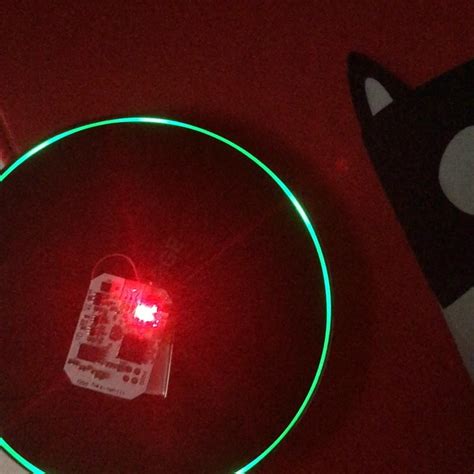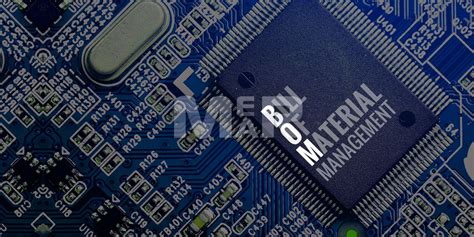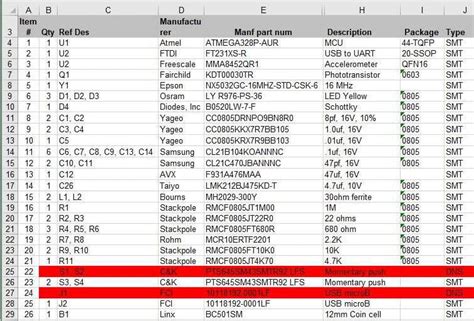Understanding Cloud-Based PCB BOM Management
Before delving into the benefits and challenges of cloud data storage for PCB BOMs, it is essential to understand what a BOM is and why it is crucial in the PCB design process.
What is a PCB BOM?
A PCB BOM, or printed circuit board bill of materials, is a comprehensive list of all the components, materials, and quantities required to manufacture a PCB. It includes details such as:
- Component names and descriptions
- Manufacturer part numbers
- Quantities
- Reference designators
- Supplier information
The BOM serves as a critical link between the design and manufacturing stages of the PCB lifecycle, ensuring that the correct components are procured and assembled according to the design specifications.
Traditional BOM Management Challenges
Traditionally, PCB BOMs were managed using spreadsheets or local databases, which posed several challenges:
-
Version Control: With multiple team members working on the same BOM, it was difficult to ensure that everyone was using the most up-to-date version, leading to errors and inconsistencies.
-
Accessibility: BOMs stored on local machines or network drives were not easily accessible to all stakeholders, particularly those working remotely or across different locations.
-
Collaboration: Sharing and collaborating on BOMs was cumbersome, often requiring manual file transfers or email attachments, which could lead to delays and miscommunication.
-
Data Integrity: Without a centralized system for managing BOMs, there was a higher risk of data corruption, loss, or unauthorized changes.
The Rise of Cloud-Based PCB BOM Solutions
To address these challenges, cloud-based PCB BOM management solutions have emerged as a viable alternative to traditional methods. These solutions leverage the power of the cloud to provide secure, centralized storage and remote access to BOM data.
Key Features of Cloud-Based PCB BOM Solutions
-
Centralized Storage: Cloud-based solutions store BOM data on remote servers, ensuring that all stakeholders have access to a single source of truth.
-
Real-Time Collaboration: Multiple users can access and edit BOMs simultaneously, with changes synced in real-time across all devices.
-
Version Control: Automatic version tracking ensures that everyone is working with the most up-to-date BOM, minimizing the risk of errors and inconsistencies.
-
Secure Access: Cloud-based solutions offer granular access controls, allowing administrators to define user roles and permissions based on their responsibilities.
-
Integration with Design Tools: Many cloud-based BOM solutions integrate seamlessly with popular PCB design software, enabling designers to easily import and export BOM data.
Benefits of Cloud-Based PCB BOM Management
The adoption of cloud-based PCB BOM management offers several significant benefits for design teams and organizations:
-
Improved Collaboration: With real-time access to BOM data, team members can collaborate more effectively, regardless of their location or time zone.
-
Increased Efficiency: Centralized storage and automated version control streamline the BOM management process, reducing manual effort and minimizing the risk of errors.
-
Enhanced Data Security: Cloud-based solutions employ robust security measures, such as encryption and multi-factor authentication, to protect sensitive BOM data from unauthorized access or breaches.
-
Scalability: As projects grow in size and complexity, cloud-based solutions can easily scale to accommodate increased data storage and user access requirements.
-
Cost Savings: By eliminating the need for on-premise infrastructure and maintenance, cloud-based solutions can help organizations reduce their IT costs and focus on their core competencies.

Challenges and Considerations
While cloud-based PCB BOM management offers numerous advantages, there are also some challenges and considerations to keep in mind:
-
Data Privacy: Organizations must ensure that their cloud provider complies with relevant data privacy regulations, such as GDPR or HIPAA, depending on their industry and location.
-
Internet Connectivity: Reliable internet access is essential for using cloud-based solutions effectively. Poor connectivity can lead to delays and disruptions in accessing BOM data.
-
User Adoption: Transitioning from traditional BOM management methods to a cloud-based solution may require training and change management to ensure user adoption and proficiency.
-
Integration with Legacy Systems: Integrating cloud-based BOM solutions with existing PLM or ERP systems may require additional effort and customization.

Best Practices for Implementing Cloud-Based PCB BOM Management
To ensure a successful implementation of cloud-based PCB BOM management, consider the following best practices:
-
Define Clear Objectives: Establish clear goals and requirements for your BOM management system, considering factors such as team size, project complexity, and integration needs.
-
Choose the Right Solution: Evaluate different cloud-based BOM solutions based on their features, pricing, and compatibility with your existing design tools and processes.
-
Establish Data Governance Policies: Define roles, responsibilities, and access controls for BOM data, ensuring that sensitive information is protected and changes are tracked and audited.
-
Provide Training and Support: Invest in user training and support to ensure that all team members are comfortable and proficient in using the new system.
-
Monitor and Optimize: Continuously monitor the performance and usage of your cloud-based BOM solution, making adjustments and optimizations as needed to improve efficiency and user satisfaction.

Is Cloud Data Storage a Gold Rush for Remote Access to BOMs in PCB Design?
Given the significant benefits and growing adoption of cloud-based PCB BOM management, it is fair to say that cloud data storage represents a “gold rush” for remote access to BOMs in PCB design. By providing secure, centralized storage and real-time collaboration capabilities, cloud-based solutions are transforming the way design teams manage and share critical BOM data.
However, it is essential to approach this gold rush with a strategic mindset, carefully evaluating the specific needs and constraints of your organization before embarking on a cloud-based BOM management initiative. By following best practices and choosing the right solution, you can unlock the full potential of cloud data storage and streamline your PCB design process for increased efficiency, collaboration, and innovation.
Frequently Asked Questions (FAQ)
1. What are the main benefits of using a cloud-based PCB BOM management solution?
The main benefits of using a cloud-based PCB BOM management solution include:
- Centralized storage and real-time collaboration
- Improved data security and version control
- Seamless integration with PCB design tools
- Scalability and cost savings compared to on-premise solutions
2. Is it safe to store sensitive BOM data in the cloud?
Yes, reputable cloud-based PCB BOM management solutions employ robust security measures, such as encryption, multi-factor authentication, and regular backups, to protect sensitive data from unauthorized access or breaches. However, it is crucial to choose a provider that complies with relevant data privacy regulations and has a proven track record of security.
3. Can cloud-based BOM solutions integrate with existing PLM or ERP systems?
Many cloud-based PCB BOM management solutions offer integration capabilities with popular PLM (Product Lifecycle Management) and ERP (Enterprise Resource Planning) systems. However, the level of integration and compatibility may vary depending on the specific solution and the existing systems in place. It is essential to evaluate the integration requirements and capabilities before choosing a cloud-based BOM solution.
4. How can I ensure user adoption when transitioning to a cloud-based BOM management system?
To ensure user adoption when transitioning to a cloud-based BOM management system, consider the following strategies:
- Involve key stakeholders in the selection and implementation process
- Provide comprehensive training and support resources
- Communicate the benefits and value of the new system clearly
- Establish clear data governance policies and procedures
- Monitor user feedback and address concerns promptly
5. What should I look for when choosing a cloud-based PCB BOM management solution?
When choosing a cloud-based PCB BOM management solution, consider the following factors:
- Compatibility with your existing PCB design tools and processes
- Data security and privacy features
- Collaboration and version control capabilities
- Integration options with other systems (e.g., PLM, ERP)
- Pricing and scalability
- User interface and ease of use
- Customer support and training resources
By carefully evaluating these factors and aligning them with your organization’s specific needs and goals, you can select the most appropriate cloud-based PCB BOM management solution to drive efficiency, collaboration, and innovation in your PCB design process.

No responses yet